
If you grow zucchini, pumpkins, cucumbers, or melons, you need pollinators if you want the plants to produce fruit. That’s because those plants produce separate male and female flowers. For example, the first flowers that appear on cucumber plants are typically males. You can tell them apart because male flowers have long stems, while female flowers have a short stem. Bees must go to both male and female flowers on the plant so that the pollen from the male reaches the female flower’s reproductive part. When pollinated, the female flower begins growing the fruit. It’s that simple.
Many fruits and vegetables are pollinated by wild native bees, honeybees, flies, wasps, beetles, moths, or butterflies. Although they’re not native, honeybees are especially important for pollinating many crops including fruit trees.
Tomato and pepper plants, on the other hand, have both male and female reproductive parts present in the same flower. A light breeze rocks the flowers and moves the pollen from the male to female parts. (You can also do this by gently shaking the stems or running your hand over them if you do not see fruit forming.) Bees and other insects will visit tomato and pepper flowers in search of nectar and while doing so, they’ll also aid pollination.
Rain or cold weather can sometimes be a deterrent for pollinators. Your zucchini or cucumber plants may have plenty of flowers but no fruit. What’s a gardener to do? You could take a small soft brush or a Q-tip and go from male to female flowers moving the pollen and aiding fertilization. This is a fun project for children, too.
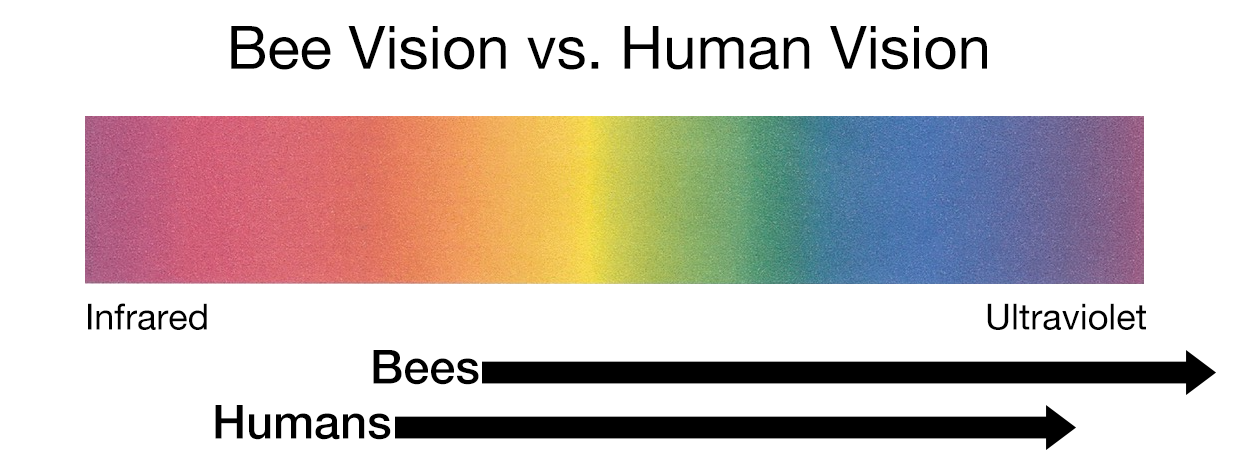
To attract bees to your vegetable patch, plant flowers they are sure to visit. The closer the flowers are to the veggies that need help, the better the chances of pollination. You could plant any sun-loving annuals near your veggies, but those with blue flowers are particularly good because bees can’t see the color red. They’ll visit nectar-rich red flowers, of course, but they are especially attracted to blue. And, unlike humans, bees can see colors in the ultraviolet spectrum.
Some sun-loving blue- and violet-flowered annuals include mealy cup sage (Salvia farinacea), ageratum (Ageratum houstonianum), purple sweet alyssum, heliotrope, cornflower (Centaurea cyanus), anise-scented sage (Salvia guaranitica), tall verbena (Verbena bonariensis), and borage. Don’t stop at blue flowers. Other pollinator-attracting annuals include zinnias, sunflowers, cosmos, lantana, tithonia, and snapdragons. Look for plants that have simple flowers—double-petalled, frilly flowers make it harder for pollinators to reach the nectar and pollen. Sunflowers are a particular favorite (unless they are “pollen-free” varieties). And you can save and roast the seeds if the birds don’t get them first.
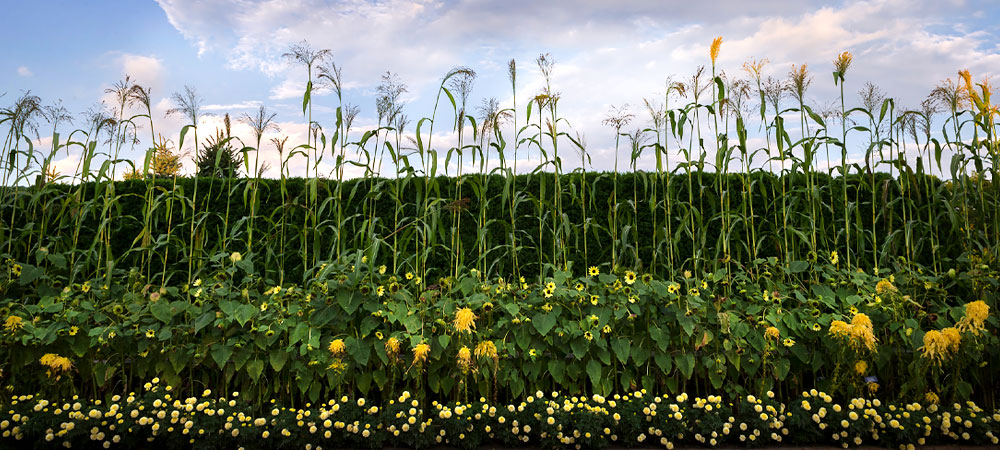
Perennials for Pollinators
If space allows, consider planting a mixed border of perennials and annuals alongside your vegetable garden. This will save some time and money because you won’t have to replant the entire border each spring. One bee-loving native plant is swamp milkweed (Asclepias incarnata). Although this milkweed thrives in moist places, it tolerates good garden soil. A bonus—it’s clump-forming, unlike common milkweed that can be aggressive in the home garden. Monarch butterflies use the plant for their eggs, so avoid pesticides.
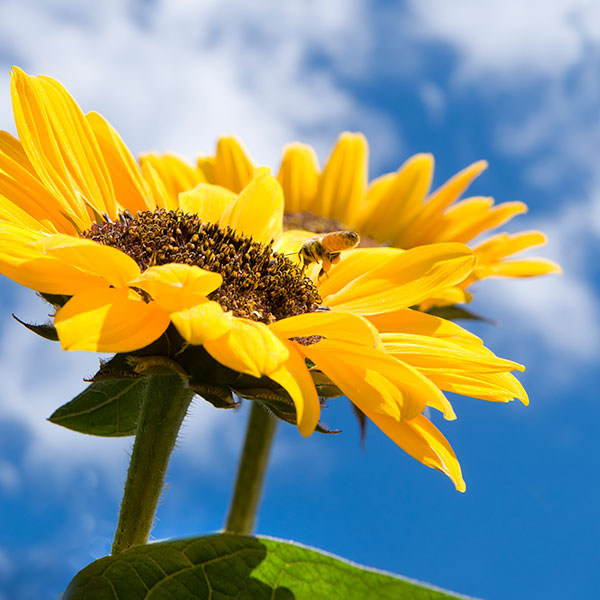
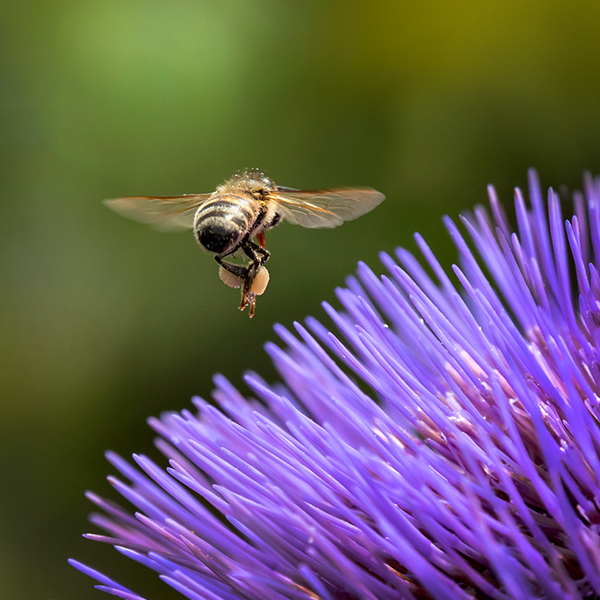
The nectar and pollen in native plants is highly nutritious to native pollinators and that’s a good reason to include them in your garden. Butterfly milkweed (Asclepias tuberosa), blazing star (Liatris), culver’s root (Veronicastrum), purple prairie clover (Dalea purpurea), black-eyed Susan, and coneflowers (Echinacea), are long-blooming natives that will attract a variety of beneficial insects, particularly bees. Don’t worry that they’ll fill up at the flowers and won’t visit your vegetable garden. A honeybee visits 50 to 100 flowers during one collection trip and makes several trips a day. Once they find your flowers and vegetables, they’ll make countless visits.
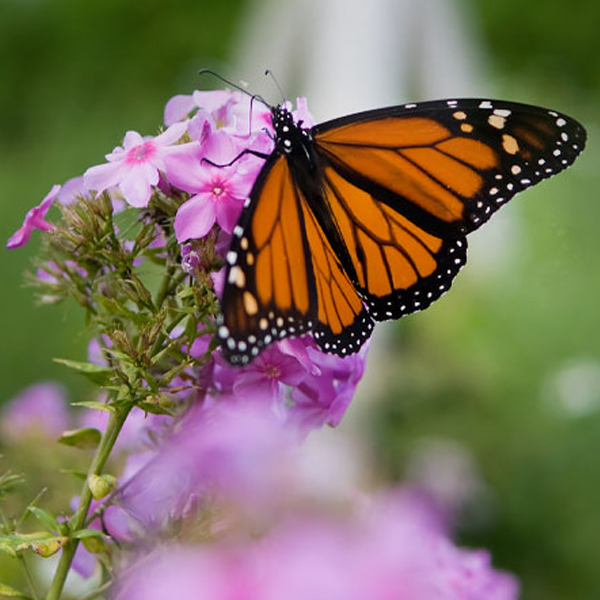
Other blue-flowered, nonnative ornamental perennials include Russian sage, giant hyssop (Agastache), and lavender. If allowed to flower, herbs such as basil, thyme, oregano, fennel, dill, and parsley also attract pollinators and nectar-seeking butterflies.
Planting Time
June is a perfect month for sowing seeds of annuals, such as sunflowers, zinnias, and marigolds. Prepare the soil and add organic matter if necessary. Seed packets generally contain most of the instructions you’ll need, such as how deep to sow the seeds. As a rule, seeds should not be buried any deeper than their diameter. Cover the seeds with a fine layer of soil or compost and water them. Once they’ve germinated, keep the ground moist but not sopping wet. You can also buy flats of blue salvia for transplanting into the garden. Once the flowers start to fade and produce seeds, you can remove them (called deadheading), which will help the plant produce more blooms. At the end of the growing season, let the flowers go to seed, which will feed hungry goldfinches and other birds.
Nina Koziol is a garden writer and horticulturist who lives and gardens in Palos Park, Illinois.

